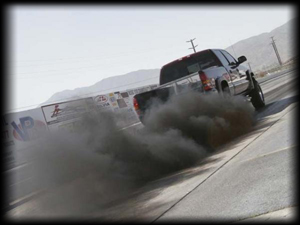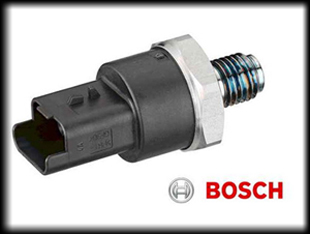Basic Diesel Theory
 First and foremost, yes, Diesel tuning boxes do work. That may
seem like a strange statement considering I'm not keen on them, but you certainly can't deny they do the
job they were intended to. The benefit of a tuning box is that it is very easy to install and remove, leaving minimal traces,
if any, that it was used, and it can be transferred from car to car.
The drawback is how they work, which will we cover in the next section, and the value they represent.
On the face of it, they provide similar performance upgrades to a remap, and are usually cheaper too,
although there are some which cost more than the average remap. For what you get out of it,
they do seem like good value, but once you know how they work, you may change your mind.
First and foremost, yes, Diesel tuning boxes do work. That may
seem like a strange statement considering I'm not keen on them, but you certainly can't deny they do the
job they were intended to. The benefit of a tuning box is that it is very easy to install and remove, leaving minimal traces,
if any, that it was used, and it can be transferred from car to car.
The drawback is how they work, which will we cover in the next section, and the value they represent.
On the face of it, they provide similar performance upgrades to a remap, and are usually cheaper too,
although there are some which cost more than the average remap. For what you get out of it,
they do seem like good value, but once you know how they work, you may change your mind.
A modern Diesel, by which I mean anything Commonrail or later, works its way through a flow chart
in the ECU to give the response you ask for.
A major point is that, unlike in petrol cars, Diesels do not need a throttle plate. Petrol powered engines
operate in a small range or air/fuel ratios, rich will waste fuel without any appreciable power increases after a point,
and lean can produce lean misfires, where the combustion chain reaction simply can't continue.
Diesels work in a different way, far less sensitive to Air/Fuel ratios, they can run very lean.
For a Petrol engine, where you want a certain torque to be produced, there will be a certain amount of fuel required
to produce that energy. As that particular amount of fuel needs the correct amount of air too, the air needs to be controlled.
The throttle is used to control the quantity of air entering, and the correct fuel is then supplied by the ECU to match.
For the Diesel though, torque (and therefore power) is controlled by changing the amount of fuel added to a cylinder
that contains as much air as possible.
The diesel accelerator pedal passes a torque request to the ECU asking for a certain amount of torque.
This has become known as the "Driver's Wish". The ECU then goes through a number of tables
to calculate the required Injection Quantity (IQ) to give this. From the map tables, engine speed,
airflow, and the amount of torque required, it will calculate how much diesel to inject.
This is then passed through a number of correction and filter maps to further refine the characteristics.
Correction for atmospheric conditions, fuel temperature etc are used, and also there will be a number of Limiter Maps.
Examples of these limiter maps are Torque Limiters which will reduce the torque that is produced if
it may cause damage to the drivetrain. Smoke Limiters are also set based on known Air/Fuel ratios that can produce black smoke
from rich conditions.
So it first off receives the requests, it will calculate how much diesel will be needed, makes sure it won't leave clouds of smoke or
ruin the clutch, further fine tunes the exact fuel quantity by its mass, until it comes to the perfect amount.
This amount is passed onto the output side, which will calculate when and how long to open an injector to give that amount of fuel.
It will already know the flow rate of the injectors, the pressures of the fuel rail, and then opens the injector for a specific time to inject the
desired quantity.
Now, where does the Tuning Box fit in?
The Tuning Box

As you will have seen in the adverts,
Diesel tuning boxes are very easy to install. Often just 2 plugs, ready and matching the original car loom.
All you need to do is unclip a plug near the back of the engine somewhere, connect in this box, and it's done.
Although you can pass a lot of data down 2 or 3 wires, that isn't what happens in this case.
The plug that the Tuning box connects into is for the Rail Pressure sensor. -Pictured right
As mentioned above, diesels aren't too fussy about Air/Fuel ratios, they will often continue to
make power when incredibly rich, and producing huge clouds of black smoke. Take a look on Youtube at
some of the big power Diesel Drag cars and trucks.
In OEM Diesel tuning for the road, the limitations are usually based on the amount of smoke produced, and the amount of power the chassis can handle.
Big BHP figures on a diesel are easy to make, and choosing the Tuner with the highest figure can sometimes be
just picking the bravest. It's easy to be brave with someone else's engine.
Intercepting the Rail Pressure sensor is the key to Tuning Boxes. The ECU/engine will control the pressure,
and it uses its sensor to confirm this. This figure is vital for the ECU to known the fuel quantity.
Adding a resistor into this sensor circuit passes the wrong information to the ECU.
What was 1500bar is now reported as 1400bar, so the ECU will activate the high pressure injection pump
to raise the pressure by 100bar above the sensor value.
The extra pressure will force more diesel through the open injector, and as mentioned, for a diesel, more
fuel = more power.
There is safety factors and tolerances built in, but in all cases, the Injector pump is now doing more work
providing the extra pressure, and the Injectors are now holding back greater forces.
The Torque and Smoke limiters have been bypassed as the ECU doesn't realise the greater fuel flow, and
more interestingly, the MPG is screwed!
Economy and Tuning Boxes
From the original calculations in the ECU, and the Vehicle Road Speed, the ECU will be
able to calculate the quantity of fuel used per unit of distance traveled. But what happens if the quantity
of diesel injected is higher than the value the ECU is expecting?
In this case, the economy will be overestimated as the ECU thinks it is using less diesel
than reality. As with most external changes, if one calibrated component is disturbed, the knock on effects
will be far reaching.
That's not to say that there isn't an increase in economy, there will be changes,
and often the economy does increase, but certainly not to the level that the On Board Computer
or Trip Computer thinks.
Remaps vs. Tuning Boxes

So what does a remap do differently?
Well, for a start, it will be clear and honest with the ECU right from the start. For the average Diesel
Remap, the fuel injection quantity is raised, but by telling the ECU to inject more, and the ECU will handle
the rest. In most cases, it is holding the injector open for longer. The Rail Pressure may have modest increases
which can help fuel vapourisation and economy, but the main method of increasing the Injection Quantity
is with a collection of tables from 'driver's wish' to 'Torque Conversion' maps, which puts less stress on the expensive Injection Pump, and the Injectors.
The Torque conversion map is used on more advance diesels which treat all the requests in Nm of torque, and then use Torque Conversion
to look up how much diesel to be injected to reach the desired figure.
Fine tuning can also be carried out on the Phase of Injection to keep Exhaust Gas Temperatures down, and Pre and Post Injection too.
The Turbo Boost pressure is often increased too, and this will provide more air (and oxygen) which will
further allow greater Injection Quantities without becoming too rich and smoking. The torque limiters can be
raised to monitored levels under full control of the tuner.
Finally of course, the Injected quantity is correct, and the MPG displayed is still accurate. The
increases seen with a Remap in economy are true and can be trusted, unlike with a Tuning Box, which can
only provide great looking false data.
What about the more expensive tuning boxes?
Well, if all that is intercepted is the Rail Pressure Sensor, and it is external to the ECU, it will work the same way.
You can have devices where the resistance added is adjustable by a small potentiometer on the outside,
but it still is just a resistor in a large, expensive box. Extra circuits may be added, more complex methods may be used, but
it still will come down to adding resistance into a circuit and fooling the ECU.
Even real time adjustment of the falsified Rail Pressure Signal would require more inputs
for the engine speed, and the Torque Request, and any big or fast changes would be immediately spotted by the ECU.
In those cases, if the rail pressure sensor suddenly starts to show dropping pressure from a Tuning Box altering the signal,
a failure in the pump, or a Rail Leak will be assumed by the ECU.
Hopefully this article will have given you the knowledge to make an informed decision on how you would
like to tune your Diesel. Both a Remap and a Tuning Box will really make your car come alive, but in different ways,
and with different Pros and Cons for each method.